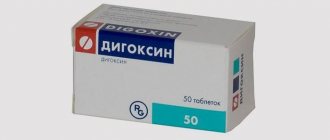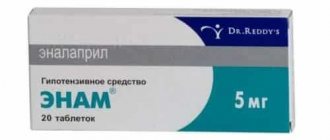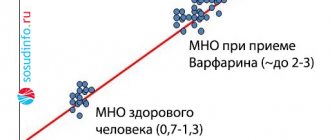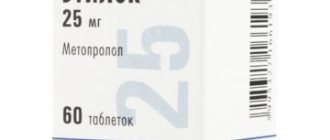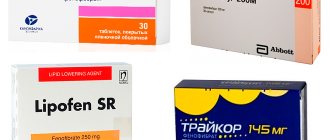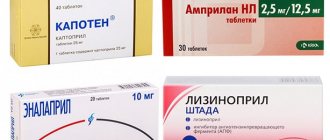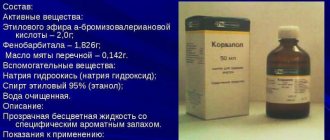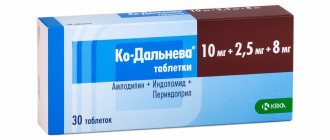- October 11, 2018
- Sports nutrition
- Tatyana Andreeva
Only with proper energy metabolism, which occurs at the cellular level, is the coordinated functioning of all body systems possible. An auxiliary source of nutrition for all cells is the drug ATP, the instructions for which we will consider in this article. This remedy is used not only in medicine, but also in sports. Its active component improves energy supply and metabolism.
What it is
Adenosine triphosphoric acid is a universal energy source for most biochemical processes that occur in the human body. It plays an important role in metabolism and energy. The use of ATP began in the first half of the 20th century. It was then that it was found that it is the main carrier of energy in cells. The energy itself is aimed at contracting muscle tissue, and it is released after the breakdown of the ATP molecule during the period of movement.
The ATP molecule consists of three substances: triphosphate, adenine and ribose. Ribose is located in the very center, its end is the beginning of adenine, and triphosphate is attached to the reverse side. ATP fills the main component of contractile fibers - myosin, which is responsible for the formation of muscle cells.
ATP, intramuscular injection of the drug.
Adenosine triphosphate (or ATP) is the main source of energy in the human body. Macroergic bonds contribute to the formation of energy during the destruction of ATP. Intramuscular energy is spent both on maintaining a constant temperature of the body and its organs and on contracting muscle fibers. All biochemical processes in the human body that occur with the release of energy are, in one way or another, associated with the action of ATP.
In addition to its main (energy) function, adenosine triphosphate serves as a source for the synthesis of various nucleic acids, performs a regulatory function of most enzymatic processes (due to its integration into the center of the enzymatic system and control of its activity) and is involved in the transmission of nerve impulses. Among other things, adenosine triphosphate is a precursor (source of synthesis) of monophosphate, which helps transmit hormonal signals to cells and tissues of the human body.
The great importance of ATP for the normal functioning of the human body has necessitated the creation of a drug based on it. This drug exists in various forms of release (in the form of powder, tablets and injections). ATP injections are the most widely used. In this case, the entry of the active substance into the tissue occurs almost instantly. As a result, the effect of the drug is accelerated and the efficiency of ATP use increases. The instructions indicate the need to prescribe the drug for the treatment of various types of dystrophies, atrophies and the usual spastic state of peripheral vessels. In addition, the drug is successfully used by athletes for quick recovery after grueling workouts, as well as to increase endurance and performance. This remedy is practically indispensable during the pre-competition training of athletes.
ATP is used intramuscularly to restore normal heart function, improve blood supply to the brain and reduce the risk of myocardial infarction.
The use of tablet forms of the drug (mainly for sublingual use) is carried out in preventive cases.
If the patient has vegetative-vascular dystonia, arrhythmia or cardiosclerosis, ATP is administered intramuscularly.
Use of the drug for more than a month is not recommended. In this case, you need to take a break for two to three weeks and then continue taking the pharmaceutical drug.
If ATP is not administered intramuscularly but is taken parenterally, there is a risk of developing side effects. First of all, taking adenosine triphosphate causes discomfort in the esophagus and stomach, nausea and even vomiting. Exceeding the maximum daily dose (about 600 milligrams for an adult and about 250 for a child) of the drug can lead to the development of allergic reactions, as well as excess potassium and magnesium (which can lead to disorders in the cardiovascular system).
Contraindications for use of the drug:
- diagnosed myocardial infarction
- presence of stroke
- bronchial asthma
— pregnancy and lactation
- hypersensitivity to the components of the drug
Patients using potassium and magnesium supplements and other drugs that stimulate cardiac activity should avoid using ATP.
To summarize, I would like to say that ATP plays a significant role in the human body, being a central link in all its energy processes, and its use as a medicine is often not only justified, but also necessary.
Release form and composition
Most often, the drug is released in the form of an injection solution, but there is also a tablet form. ATP solutions are packaged in transparent glass ampoules of one milliliter each, placed in a blister. One package contains ten units of the drug.
Each ampoule of injection solution contains sodium adenosine triphosphate and minor components - citric acid and water.
Doctors often prescribe additional intake of ATP Long tablets; the instructions for use say that this can enhance the effect of use.
Instructions for use of the drug ATP Long in tablets and injections
The half-life of the drug in the blood is short, so it is administered intravenously (injection) in doses of 3, 6 or 12 mg. Treatment is carried out in the form of a short infusion with careful monitoring of blood pressure. If therapy is carried out using tablets, then high doses are prescribed: from 10 to 50 mg 3-4 times a day. The drug ATP is rarely administered intramuscularly.
Concomitant therapy with theophylline is contraindicated because it reduces the therapeutic effect of ATP-long. The drug dilates both peripheral vessels and coronary arteries.
You can buy the medicine (in ampoules or tablets) in pharmacies with a prescription. The medication can only be taken under the guidance of a doctor. Self-use can lead to asystole, which can be fatal. The price of adenosine varies widely: from 50 to 200 rubles, depending on the dosage.
Operating principle
The active substance of the drug improves energy supply in tissues and metabolism. In addition, it performs a number of useful functions:
- ATP transmits excitation signals from nerve cells in the brain to the heart muscle.
- Normalizes the functioning of connecting channels that are located in the intercellular space.
- Normalizes the conduction of impulses along nerve fibers.
- Increases the endurance of the heart muscle during active activities.
- Relaxes the heart muscle.
Mechanism of action
ATP is destroyed in all energy-intensive processes in the body. When adenosine triphosphoric acid is broken down, adenosine is formed. In the nervous system, adenosine blocks the functioning of certain receptors, which leads to a decrease in the release of excitatory neurotransmitters - dopamine, glutamate and norepinephrine.
There is a feedback effect: the more active the nerve cells, the more ATP is used and the more adenosine is stored. As a result, more receptors are blocked by the endogenous neurotransmitter, and nerve cells work more slowly. This effect helps protect the brain from “overstrain.” Blockade of activating neurotransmitters leads to dilation of blood vessels with a subsequent decrease in blood pressure.
Adenosine is the active ingredient of the drug
An increase in adenosine concentration stimulates glycolysis. This increases the availability of energy for the body. And has an inhibitory effect on lipolysis.
The drug blocks thrombin and vasopressin, which leads to platelet aggregation inhibition and vasodilation through smooth muscle relaxation.
In the liver, the drug exhibits an anti-ischemic effect through vasodilation, and in the lungs it causes bronchodilation (dilation of the bronchi).
Adenosine acts as an endogenous regulator of immune and inflammatory processes. Inhibits neutrophil activation, phagocytosis and the synthesis of certain toxic by-products of the inflammatory process.
Adenosine protects the body from free radicals formed during normal oxidative metabolic processes and in states of hypoxia or ischemia.
Pharmacology
The drug is used to treat coronary artery disease. Instructions for the use of ATP for injection confirm the high rates of stimulation of energy metabolism. Correct use of the drug improves the transport of ions into cell membranes, which in turn helps restore acceptable levels of potassium and magnesium salts.
In addition, ATP injections normalize blood circulation in the vessels, and this in turn leads to improved heart function. With prolonged use, physical activity increases noticeably.
Methods of application
In order to get the proper maximum effect from using this drug, you must follow all the rules for taking it and the dosage regimen.
The ATP Long tablet must be placed under the tongue and kept there until it is completely dissolved. This method of administering the drug is called sublingual.
The ATP solution intended for intramuscular injection has greater efficiency and a higher level of action in the body.
After taking the drug, within twenty-four hours the patient’s condition improves, angina attacks become much rarer, and blood pressure returns to normal.
Taking ATP Long does not depend on the timing of meals.
During the course of treatment with this drug, it is important to follow a certain dietary diet, from which the following should be excluded: tea, coffee, chocolate, carbonated drinks. It is also necessary to completely eliminate the consumption of alcoholic beverages with even the lowest alcohol content.
When necessary
According to the instructions for use of ATP, the drug is used in the following cases:
- Significant deterioration in physical activity.
- Fast fatiguability.
- Preparation for sporting events and competitions.
- Restoration of heart function.
- At risk of arrhythmia and heart attack.
- During a decrease in blood circulation in the vessels of the brain.
- For the treatment of chronic fatigue syndrome.
Injections of the drug are prescribed for:
- tachycardia;
- myocarditis;
- ischemic disease;
- angina pectoris;
- vegetative-vascular dystonia;
- for other heart diseases.
ATP drug
It is clear how ATP stands for, but what happens in the body when its concentration decreases is not clear to everyone. Biochemical changes are realized in cells through adenosine triphosphoric acid molecules under the influence of negative factors. For this reason, people with ATP deficiency suffer from cardiovascular diseases and develop muscle tissue dystrophy. To provide the body with the necessary supply of adenosine triphosphate, medications containing it are prescribed.
The medicine ATP is a drug that is prescribed for better nutrition of tissue cells and blood supply to organs. Thanks to it, the patient’s body restores the functioning of the heart muscle, reducing the risk of developing ischemia and arrhythmia. Taking ATP improves blood circulation processes and reduces the risk of myocardial infarction. Thanks to the improvement of these indicators, general physical health is brought back to normal, and a person’s performance increases.
Indications for the use of ATP in sports
An insufficient amount of ATP causes weakness and the inability to conduct a full workout, since it is needed for movement and energy exchange. The body can completely use up the substance in the first few seconds of performing the exercise, after which ATP begins to be synthesized using the main biochemical systems:
- aerobic respiration;
- phosphagen system;
- glycogen and lactic acid system.
In bodybuilding, the drug is used to increase the intensity and duration of training, as well as to increase endurance. The main positive effects of ATP use include:
- improvement of blood circulation in the coronary vessels;
- reducing the frequency of shortness of breath when playing sports;
- stimulation of energy metabolism;
- reduction of oxygen consumption by the heart muscle;
- decrease in uric acid content;
- restoration of the amount of magnesium and potassium ions;
- increase in cardiac output.
Pharmacological properties:
Pharmacodynamics. ATP-LONG is an original drug of a new class of substances - multi-ligand coordination compounds with high-energy phosphates, the molecule of which consists of adenosine-5'-triphosphate (ATP), the amino acid histidine and magnesium and potassium salts. Thanks to its original structure, the molecule has a pharmacological effect unique to it, which is not inherent in any of its chemical components (ATP, histidine, K+, Mg++). ATP-LONG stimulates energy metabolism, the activity of ion transport systems of cell membranes, normalizes the concentration of potassium and magnesium ions, indicators of the lipid composition of membranes, the activity of membrane-dependent enzymes, improves the antioxidant system of myocardial protection, and reduces the concentration of uric acid. ATP-LONG has an anti-ischemic, membrane-stabilizing, anti-arrhythmic effect due to the normalization of metabolic processes in the myocardium during ischemia and hypoxia. ATP-LONG improves central and peripheral hemodynamics, coronary circulation, increases myocardial contractility, functional state of the left ventricle and cardiac output, which leads to increased physical performance. Under conditions of ischemia, the drug reduces myocardial oxygen consumption, improves coronary circulation, and activates the functional state of the heart, which leads to a reduction in the frequency of angina attacks and shortness of breath during exercise. The drug restores normal sinus rhythm in patients with paroxysmal supraventricular and supraventricular tachycardia, with atrial fibrillation and flutter, and also reduces the activity of ectopic foci (atrial and ventricular extrasystoles). ATP-LONG normalizes the concentration of potassium and magnesium ions in tissues.
Pharmacokinetics. Not studied.
How to combine
In order to get the maximum effect from the use of ATP in sports, it is necessary to combine the drug with other additives and substances. B vitamins are great for this: B1, B6 and B12. Often, athletes add BCAA amino acids and food gelatin to this mixture (it contains a large amount of collagen, which has a beneficial effect on cartilage, joints and ligaments).
It should be borne in mind that B vitamins must be taken separately, because when they enter the body together, they neutralize each other’s effects. The interval between doses should be 10-12 hours. They have a positive effect on metabolic processes: fat, protein-carbohydrate and other processes associated with the synthesis of various substances.
All of the above drugs are well compatible and have a positive effect on athletes. Thanks to this combination, sleep improves, muscle growth increases and the body's recovery process accelerates.
Reviews
Oleg, 42 years old
The cardiac drug ATP is very effective and time-tested. I took it on the recommendation of a doctor, because after taking Torginal drops for a long time, which I prescribed to myself, I started having problems with blood pressure and tachycardia. I took the pills for 30 days, after which all the side effects went away.
Angelica, 37 years old
As part of the complex treatment of ischemia, my grandmother was prescribed intramuscular injections of ATP (I don’t know the meaning). I did them for more than 2 weeks, but there was no improvement. I can conclude that for serious heart pathologies the drug is completely useless. Perhaps it should be perceived as a metabolic medicine from traditional medicine or vitamins.
Valeria, 23 years old
I bought ATF Long in a dosage of 10 mg for a child. Although according to the instructions this drug is not intended for children, our pediatrician has already prescribed it to us several times. The medicine is excellent for treating inflammation of the heart muscle (in complex therapy). The tablets are small and pleasant to the taste, so the baby swallows them with pleasure.
Alena, 30 years old
ATP tablets were prescribed to me by a cardiologist for heart failure. In general, the drug is recommended for vegetative-vascular dystonia and chronic fatigue syndrome, which I also have in stock. I felt a positive result after just a few days of taking it: my heart rhythm was restored and I began to feel more alert in the morning.
How to use
Before taking the drug, you should consult your doctor and, if necessary, undergo an examination. This will help set the required dosage based on the characteristics of the body.
According to the instructions for use of ATP, 50-200 milligrams per day are consumed orally, divided into 2-4 doses throughout the day. This way the product is better absorbed.
Intramuscular injections are given once a day, 10 milligrams deep into the muscles of the buttocks or thighs. The injections are painful, so it is recommended to mix ATP with Novocaine, Ledocaine or another anesthetic. Gradually, the daily dose is raised to 20 mg, which is divided into two injections. The duration of the ATP course is 1-2 months, after which it is necessary to take a two-month break to eliminate possible negative effects.
Also, the instructions for ATP say that intravenous use of the drug is undesirable and is prescribed only in cases of severe illness. With intravenous use, the risk of such negative consequences as bradycardia, drop in blood pressure, short-term cardiac arrest and cardiac arrhythmia increases. It is also advisable to exclude the use of ATP in conjunction with cardiac glycosides.
Side effects
Against the background of intravenous and intramuscular administration of ATP solution, the following side effects from various organ systems may develop:
- Cardiovascular system - chest discomfort, palpitations, decreased blood pressure, bradycardia or tachycardia, atrioventricular conduction disturbance, arrhythmia.
- Nervous system – headache, periodic dizziness, the appearance of a feeling of squeezing in the head, the development of phobias, short-term loss of consciousness.
- Gastrointestinal tract - the appearance of a metallic taste in the mouth, nausea, increased intestinal motility with intravenous administration of the solution.
- Respiratory system – bronchospasm (narrowing of the bronchi) with shortness of breath.
- Urinary system - increased diuresis (the volume of urine excreted over a certain period of time).
- Musculoskeletal system – pain in the neck, arms, back.
- Skin – hyperemia (redness) in the facial area.
- Sense organs – blurred vision.
- Allergic reactions - skin rashes, itching, urticaria, angioedema, anaphylactic shock.
- General reactions are increased body temperature, a feeling of heat.
- Local reactions - redness of the skin, tingling sensation in the area where the solution was administered.
special instructions
The instructions for using ATP intramuscularly indicate that the drug should not be used in conjunction with large amounts of cardiac glycosides. This may lead to the side effects listed above.
The ATP injection solution is stored at a temperature of four to six degrees in a dark place out of reach of children.
Contraindications
Despite the fact that ATP is a substance that is produced in our body, it has several contraindications:
- individual intolerance;
- acute and subacute myocardial infarction;
- children under 18 years of age, since there are no studies on the safety of the drug for children.
During pregnancy and breastfeeding, the doctor may prescribe ATP, but only if absolutely necessary, having assessed all the risks. The drug is not prescribed simultaneously with glycosides (Strophanthin, Digoxin), because this combination increases the risk of side effects.
Find out how oxygen starvation of the brain manifests itself. Prevention of cerebral ischemia.
Read about factors that negatively affect brain activity here.
You can learn about drugs for the treatment of multiple sclerosis at: Methods of treatment and prevention.
Side effects after use
ATP in the human body can provoke certain disturbances in the functionality of the digestive system. These disorders may manifest themselves as follows:
- through nausea;
- through discomfort in the stomach and intestines;
- through a feeling of discomfort in the esophagus.
ATP can also cause allergic reactions to excessive formation of potassium and magnesium.
That is why this drug cannot be prescribed to yourself and taken without specific recommendations from the attending physician and a preliminary examination of the body for the level of potassium and magnesium in it.
During therapy with ATP Long, careful medical monitoring of the level of potassium and magnesium in the patient’s body is necessary.
This drug is generally not recommended for children.
As a rule, the appointment of ATP Long begins after the age of eighteen.
Contraindications for use
This drug has a number of contraindications.
So, it is not prescribed in the following cases:
- with a history of myocardial infarction;
- with a history of stroke;
- for bronchial asthma;
- during pregnancy and breastfeeding;
- with individual hypersensitivity to any of the components that make up the drug and the ATP molecules themselves.
This drug should be used with caution in combination therapy with other drugs containing potassium and magnesium, drugs intended to stimulate cardiac activity.
In medical practice, no cases of poisoning with this drug have yet been observed, but there is a high level of risk of developing overdose symptoms. In this case, it is necessary to place the patient in a hospital and prescribe symptomatic treatment.
